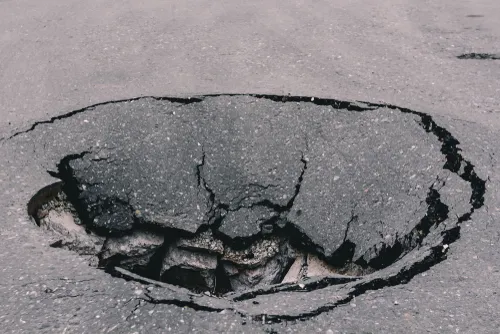The strain caused by both the unpredictability of sinkholes and the increasing frequency with which they appear throughout Florida is being felt not only by worried property owners, but by the state’s real estate and insurance industries, according to a report published online by Business Insider.
According to the report, unlike hurricanes—Florida’s other trademark natural disaster—sinkholes can neither be prepared for nor predicted. The unpredictability factor, experts say, causes real estate developers and, consequently, insurance companies to essentially guess whether land is safe enough to build upon without knowing for sure if a sinkhole will appear within a year or two after a structure’s completion.
“At least with rising tides, property owners can opt to buy on high ground some distance from the coast,” Florida real estate development expert Peter Zalweski told Business Insider. “As Florida’s population grows and development continues, we expect sinkholes to become a bigger and bigger issue for homeowners with no clear solution in place.”
As a result of the uncertainty presented to real estate developers by Florida’s geologic makeup, the state has mandated its insurance providers cover “catastrophic ground collapse.” Though panned at first due to its added cost—between $200 and $2,000 depending on where a house is located—statistics indicate insurance for catastrophic ground collapse may be more necessary than ever. According to the Office of Insurance Regulation, total reported sinkhole claims throughout the state rose from 2,360 in 2006 to more than 3,000 in 2010. Additionally, one-third of sinkhole activity recorded since 1960 has happened in the last 13 years, according to the report, with half of that occurring in the last three years.
While the state’s natural topography shoulders much of the blame, some geologists, according to the report, agree that sinkhole activity is becoming more common in Florida due to developers pumping water from the ground for new agricultural and real estate projects. Though the acid in Florida’s groundwater creates many sinkholes by dissolving the underlying limestone—a geological feature that has some now referring to the Sunshine State as the “Swiss Cheese State”—that same water acts as support for whatever is above ground. The lack of ground water combined with water added above ground by heavy rains, geologists believe, poses a much larger problem than many realize.
Florida’s population boom and the combination natural and man-made forces, however, aren’t the only culprit behind its increased sinkhole activity. The bottom line of developers and real estate companies alike, Zalweski says, also plays a part in Florida’s changing landscape.
“As builders are forced to go farther and farther out of cities in search of developable land,” Zalweski said, “compromises such as building on less-than-ideal sites have to be made to deliver competitively-priced properties.”
